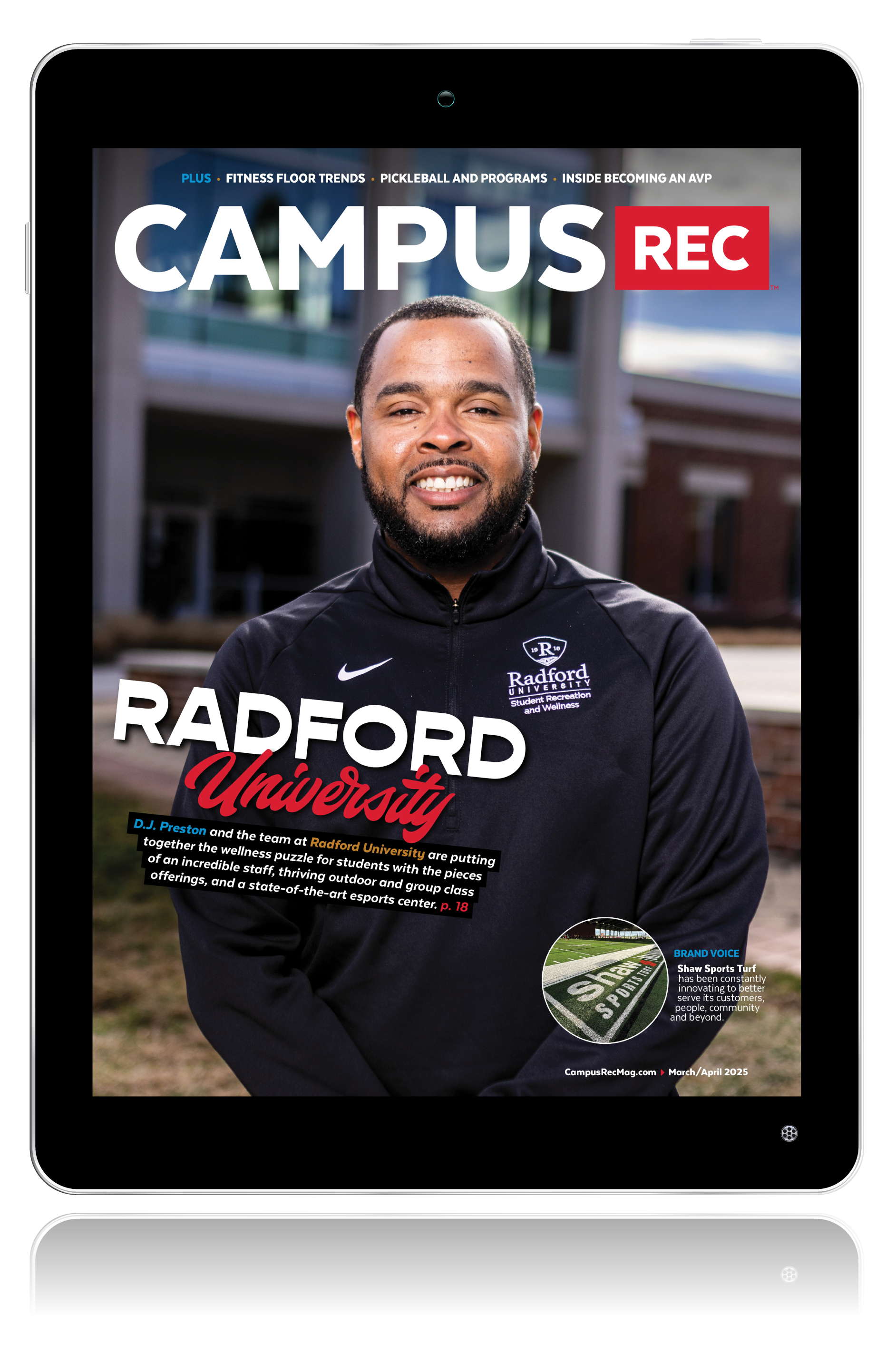As programmers we are constantly looking for the next trend, the next fringe activity or the changes we need to make to keep our participants engaged. The COVID-19 pandemic forced many of us to revaluate our offerings, determine what worked and what did not, and where our industry was headed in the new recreational sports world with pandemic programming trends.
Fall 2021 was a masked “return-to-normal” with a hybrid model of in-person and virtual options at East Carolina University (ECU). Our fitness classes, adventure trips and intramural sport programs were largely back with minor modifications, but some of our traditional cornerstones did not look the same. Staffing numbers were low, participants were wary and student fee dollars were significantly lower than our prior semesters. The great “reassessment” began and the changes we thought might be temporary were more permanent than we ever imagined. Here are some pandemic programming trends that will stay.
Staffing Challenges
We all heard about the Great Resignation from the countless online blog posts and news headlines for full-time staff, but many of us did not count on student employees failing to return to their posts. Less available workers, or at least less willing to work for our lower on-campus wages, forced many of us to make significant alterations to our schedules.
Extra Credit: Is Your Department Experiencing the Great Resignation?
Now over two years removed from “what we’ve always done,” our current participants do not even remember our former calendars. Fewer adventure trips, shorter service hours, compressed group fitness schedules and fewer staff at the front desk are here to stay. Many of us used to fill a classroom or two with willing employees, but now we hope for 10 in an online applicant pool.
Unfortunately, scaling back programming may just be our new reality and decreased offerings might be a regular occurrence.
Shorter Intramural Sports Seasons
As we fight to fill employee rosters, we also have to consider the implications of tighter budgets and participants unwilling to commit to the former seven-plus-week seasons of pre-2020.
Students value event-based experiences they can post on social media. A two-month-long flag football league is too daunting for many to comprehend. A three week-season followed by playoffs is better for budgets, fits easier into an academic calendar and is a programmer’s dream for marketing and staff recruitment.
Even scheduling a four-team division for round-robin play is better. Students used to clammer by the thousands to play more games, but if last fall taught us anything at ECU the experience was just as memorable for our participants even with less time on the field.
Hybrid Fitness Delivery
Our recreation centers will always be full 3 p.m. to 7 p.m. Monday through Thursday, but the “busting at the seams” feeling has not quite returned. Some exercisers just are not ready to venture back into a group fitness class with 39 other campus community members and may never get over that apprehension. I still find it a little awkward to be on an elliptical directly adjacent to a fellow Pirate. Respect the buffer people!
During the pandemic we quickly embraced virtual fitness delivery and some companies have turned it into a very profitable industry. Offering a few classes a week in an on-demand format or providing virtual personal trainers are easy ways to keep your members energized, engaged and enrolled in your hopefully-profitable fitness programs.
Special Events
Recreational special events are not a new trend. It’s just that offering them more frequently is an easy way to keep participation numbers up and our students entertained.
During the pandemic many programs moved to “one-off” events with little commitment and decreased potential for viral spread. It turned out these events were very popular, and students clamored for opportunities to participate in a short timeframe.
Three-point contests on a random Wednesday, pop-up table tennis tournaments, trivia nights, two-hour floats on your local waterway and healthy cooking videos were all staples of safe programming we repeated when restrictions were lifted.
Our students are changing with each new first-year class, and we must adapt to reach their growing interests. “Meet them where they are” is not just a new concept, it is just one we must embrace to stay relevant.










